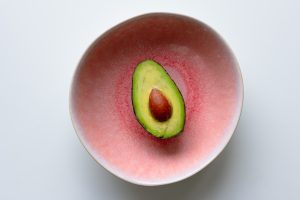 There’s a reason we offer meal planning and nutrition help at Next Level Fitness in Irvine, CA. It’s because part of getting fit means eating healthier. That includes eating high fiber foods. High fiber foods contain two classifications of fiber. There is soluble fiber, which dissolves in water and creates a gel. The gel feeds the friendly microbes in your digestive tract, who in turn, help digest food, while also providing many other benefits. The other type of fiber is insoluble fiber. It doesn’t dissolve but adds bulk to your diet.
There’s a reason we offer meal planning and nutrition help at Next Level Fitness in Irvine, CA. It’s because part of getting fit means eating healthier. That includes eating high fiber foods. High fiber foods contain two classifications of fiber. There is soluble fiber, which dissolves in water and creates a gel. The gel feeds the friendly microbes in your digestive tract, who in turn, help digest food, while also providing many other benefits. The other type of fiber is insoluble fiber. It doesn’t dissolve but adds bulk to your diet.
Good sources of insoluble fiber.
Besides adding bulk to your stool and keeping it soft and easier to pass, insoluble fiber slows digestion. That helps keep blood sugar level. It also helps prevent constipation and the results of years of constipation, like hemorrhoids and an increased risk of colon cancer. Some of the best sources of this type of fiber are green peas, whole grains, nuts and dark leafy greens. Oat bran, beans and unpeeled apples are probably the best known.
Soluble fiber also helps keep your stool soft by absorbing water and creating a gel.
Soluble fiber is great for weight loss, since it also slows digestion and keeps you feeling full longer. Soluble fiber also may help lower cholesterol levels, in addition to lowering blood sugar levels. What foods are rich in soluble fiber? Beans, oats and apples, for instance are rich in both soluble and insoluble fiber. Avocados, sweet potatoes, sunflower seeds, flax seeds and Brussels sprouts are also high in both.
Beans provide both protein and fiber.
As noted previously, beans have both soluble and insoluble fiber, so they’re an excellent source. However, they’re also loaded with the macronutrient protein, making them especially valuable for a healthy diet. Not only are beans a rich source of protein, they can cut grocery cost if you make one or two meals a week a meatless meal and use beans as the protein source for those meals. A half cup of cooked black beans offers 34% of your daily fiber and has a long shelf life. They’re loaded with folate and thiamin that help improve brain health. They’re good for the heart, plus provide cancer and diabetes preventatives. They have nutrients that improve blood circulation and improve digestion, help repair cells and aid in cell growth.
- Fresh fruit are high in fiber and can help boost your energy level by maintaining a consistent blood sugar level throughout the day. If possible, eat the fruit and their skins when possible.
- While almost all vegetables are high in fiber, those that are highest include parsnips, green peas, acorn squash, collard greens and butternut squash. Keep the peels on potatoes to maximize nutrition and fiber.
- Oatmeal is particularly good for slowing the absorption of sugar and slowing digestion. It makes you feel full longer, which can help curb your appetite for mid-morning snacks. Steel cut oats are best.
- Most highly processed foods are devoid of fiber. Meat is also not a good source of fiber. Simply adding a few more vegetables to your diet can help or substituting plant protein sources a few days a week can increase fiber.
For more information, contact us today at Next Level Fitness
